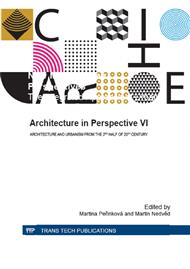p.3
p.12
p.17
p.23
p.30
p.35
p.39
p.44
Spatial and Social Boundaries in Gentrified Neighbourhoods
Abstract:
In the paper we analyse the character of spatial boundaries of buildings and examine their correlation with social changes. For a case study we use Holesovice, a quarter of Prague, Czech Republic. This city part is a typical example of originally industrial suburb with a large number of factories, docks and railway station, all built mainly in 19. century. In the last 15 years the area has gone through gentrification that significantly changed its urban and architectural face. The transformation also affected the character of services and cultural facilities available in the area. We compare boundaries of the original construction and boundaries of the new developments built in the last 15 years. The analysis is done at the scale of buildings. Our methodological framework is based on the Space Syntax theory and Urban Morphology. The studied characteristics are integration of accessible spaces and design of boundaries. The paper identifies urban and architectural features that correspond and reflect the lifestyle of the gentrified part of population.
Info:
Periodical:
Pages:
23-29
Citation:
Online since:
November 2014
Authors:
Keywords:
Permissions:
Share:
Citation:


